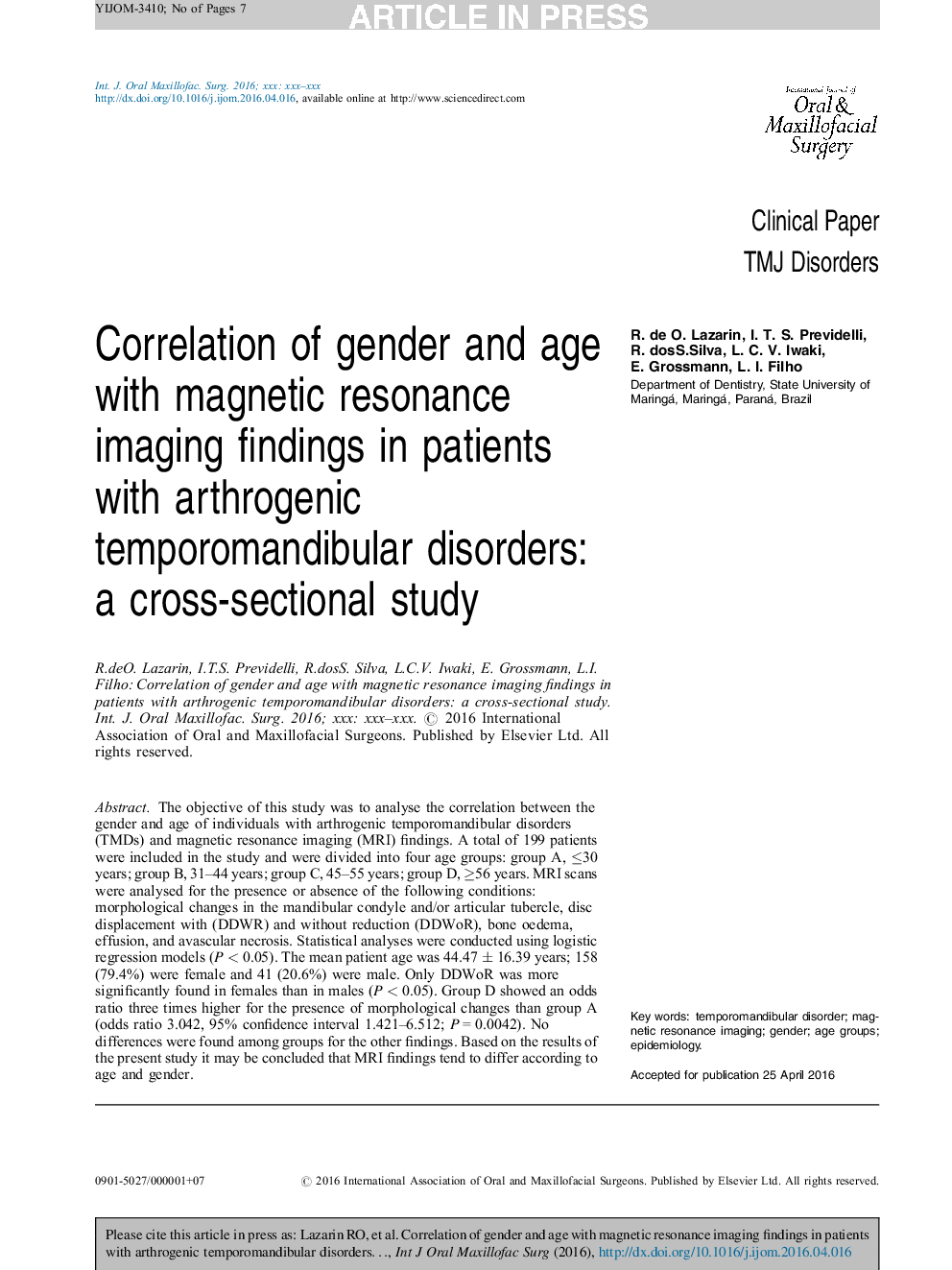| Article ID | Journal | Published Year | Pages | File Type |
|---|---|---|---|---|
| 5639228 | International Journal of Oral and Maxillofacial Surgery | 2016 | 7 Pages |
Abstract
The objective of this study was to analyse the correlation between the gender and age of individuals with arthrogenic temporomandibular disorders (TMDs) and magnetic resonance imaging (MRI) findings. A total of 199 patients were included in the study and were divided into four age groups: group A, â¤30 years; group B, 31-44 years; group C, 45-55 years; group D, â¥56 years. MRI scans were analysed for the presence or absence of the following conditions: morphological changes in the mandibular condyle and/or articular tubercle, disc displacement with (DDWR) and without reduction (DDWoR), bone oedema, effusion, and avascular necrosis. Statistical analyses were conducted using logistic regression models (P < 0.05). The mean patient age was 44.47 ± 16.39 years; 158 (79.4%) were female and 41 (20.6%) were male. Only DDWoR was more significantly found in females than in males (P < 0.05). Group D showed an odds ratio three times higher for the presence of morphological changes than group A (odds ratio 3.042, 95% confidence interval 1.421-6.512; P = 0.0042). No differences were found among groups for the other findings. Based on the results of the present study it may be concluded that MRI findings tend to differ according to age and gender.
Related Topics
Health Sciences
Medicine and Dentistry
Dentistry, Oral Surgery and Medicine
Authors
R.deO. Lazarin, I.T.S. Previdelli, R.dosS. Silva, L.C.V. Iwaki, E. Grossmann, L.I. Filho,
